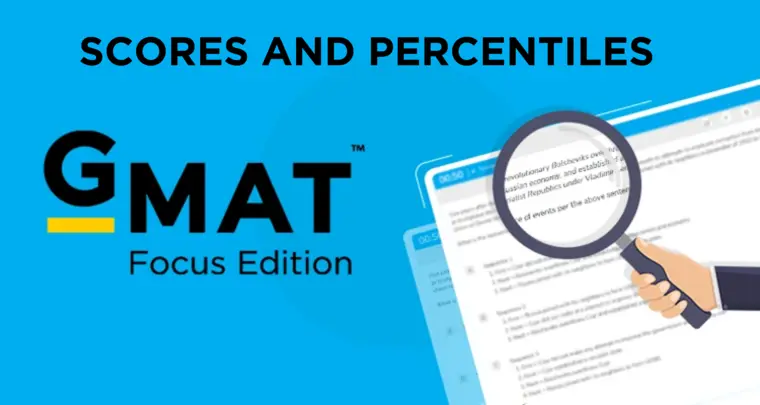Some business schools are harder to get in as compared to others. To know which business schools application process is highly competitive, MBA acceptance rate and yield rate are important statistics. These numbers become more useful if you are researching potential MBA programs. To help you with your research, we have compiled the acceptance rate and yield rate of top business schools in this article. This data is for the full-time MBA class of 2024.

Here is the definition of acceptance rate and yield rate:
Acceptance rate – It is the ratio of the number of admissions offers made by the business school and the total number of applications.
Yield rate – It is the ratio of the number of admissions offers accepted (students who enrol in the MBA program) and the total number of admission offers made by the business school.
Was your b-school application rejected? Redefine Your MBA Application: Discover reapplicant strategies by reading our comprehensive article. – Reapplicant Strategies to Business Schools
MBA acceptance rate and yield rate of top business schools
MBA acceptance rate and yield rate of top business schools |
|||||
| Business School | Acceptance rate | Yield rate | Applicants | Admits | Enrolled |
| Harvard Business School | 9.50% | 87% | 8264 | 1021 | 1015 |
| Wharton | 19.20% | 67.10% | 6692 | 1287 | 863 |
| Stanford GSB | 5.70% | 89.10% | 8173 | 469 | 418 |
| Booth School of Business | 23.50% | 52.90% | 4674 | 1100 | 582 |
| Kellogg School of Management | 20.20% | 51.60% | 4595 | 926 | 478 |
| MIT Sloan | 11.60% | 60.30% | 5798 | 670 | 404 |
| Dartmouth Tuck | 23.00% | 48.80% | 2610 | 601 | 293 |
| Columbia Business School | 16.50% | 73.90% | 6188 | 1019 | 753 |
| UC-Berkeley – Haas | 12.90% | 50.90% | 4007 | 515 | 262 |
| Yale SOM | 17.40% | 48.80% | 4098 | 713 | 348 |
| Michigan – Ross | 25.30% | 48.00% | 3484 | 880 | 422 |
| Duke – Fuqua | 22.40% | 50.90% | 3796 | 851 | 433 |
| Virginia – Darden | 24.50% | 48.60% | 2743 | 671 | 326 |
| Cornell – Johnson | 29.90% | 56.00% | 1653 | 495 | 277 |
| UCLA – Anderson | 22.30% | 49.10% | 3315 | 740 | 363 |
| NYU – Stern | 20.90% | 48.50% | 3927 | 822 | 399 |
| CMU – Tepper | 29.90% | 40.70% | 1804 | 540 | 220 |
| McCombs | 27.80% | 36.80% | 2586 | 720 | 265 |
| UNC – Kenan-Flagler | 37.20% | 36.40% | 2151 | 800 | 291 |
| Emory – Goizueta | 34.60% | 36.80% | 1350 | 467 | 172 |
| Indiana – Kelley | 34.90% | 47.10% | 1240 | 433 | 204 |
| Washington – Foster | 22.40% | 38.60% | 1038 | 233 | 90 |
| Georgetown – McDonough | 47.80% | 33.10% | 1742 | 833 | 276 |
| Notre Dame – Mendoza | 41.90% | 49.40% | 633 | 265 | 131 |
| Rice – Jones | 27.20% | 53.40% | 813 | 221 | 118 |
| USC – Marshall | 29.10% | 38.70% | 1998 | 581 | 225 |
| Georgia Tech – Scheller | 31.10% | 53.30% | 489 | 152 | 81 |
| Washington – Olin | 39.70% | 31.00% | 1175 | 467 | 145 |
| Michigan State – Broad | 33.40% | 53.20% | 416 | 139 | 74 |
| Arizona State – Carey | 24.00% | 71.70% | 634 | 152 | 109 |
| Minnesota – Carlson | 36.80% | 42.30% | 565 | 208 | 88 |
| Wisconsin School of Business | 30.40% | 61.50% | 556 | 169 | 104 |
| Vanderbilt – Owen | 43.20% | 42.50% | 937 | 405 | 172 |
| Ohio State – Fisher | 37.20% | 54.80% | 446 | 166 | 91 |
| BYU – Marriott | 46.70% | 77.80% | 377 | 176 | 137 |
| Penn State – Smeal | 17.10% | 62.80% | 550 | 94 | 59 |
| Rochester – Simon | 30.00% | 31.30% | 894 | 268 | 84 |
| Purdue – Krannert | 37.30% | 36.30% | 332 | 124 | 45 |
| UC-Irvine – Merage | 25.00% | 47.30% | 737 | 184 | 87 |
| Maryland – Smith | 36.20% | 43.40% | 630 | 228 | 99 |
| Boston – Questrom | 40.00% | 38.30% | 1069 | 428 | 164 |
| Pittsburgh – Katz | 33.20% | 41.40% | 509 | 169 | 70 |
| Texas-Dallas – Jindal | 23.80% | 59.60% | 374 | 89 | 53 |
| Texas A&M – Mays | 33.80% | 35.80% | 479 | 162 | 58 |
| Boston College – Carroll | 39.70% | 32.70% | 617 | 245 | 80 |
| SMU – Cox | 45.50% | 51.40% | 457 | 208 | 107 |
| Rutgers | 36.60% | 30.20% | 443 | 162 | 49 |
| Georgia – Terry | 37.00% | 56.70% | 262 | 97 | 55 |
Data Source – Poets&Quants
Here is a list of other similar articles:
- List of Indian B-Schools Accepting GMAT Scores
- Average GMAT scores of top business schools in US and Europe
- Average GPA of incoming MBA students of top 50 business schools
- Average MBA age and work experience at top business schools
- Top 50 Business Schools according to business school rankings 2022
If you are planning to take the GMAT, we can help you with a personalized study plan and give you access to quality online content to prepare. Write to us at acethegmat@e-gmat.com. We are the most reviewed GMAT prep company on gmatclub with more than 2500 reviews (as on Jan 9, 2023). Why don’t you take a free trial and judge it for yourself?














